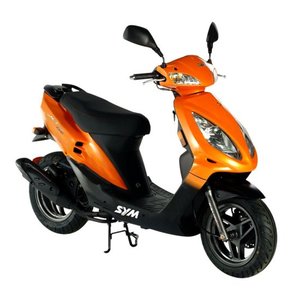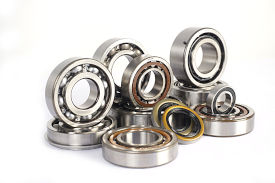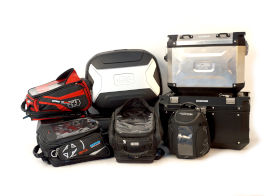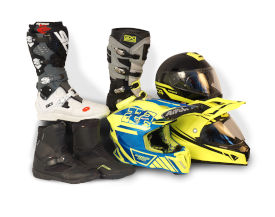SYM JET 50 (2003-2011): A Nimble Urban Companion for the Daily Grind
Introduction
The SYM JET 50, produced from 2003 to 2011, is a scooter that embodies practicality and simplicity for urban commuting. Designed for riders seeking an affordable, lightweight, and easy-to-handle machine, this Taiwanese-built two-wheeler carved a niche in the 50cc segment. With its mix of two-stroke and four-stroke engine variants, the JET 50 appeals to both eco-conscious riders (in later Euro 3-compliant models) and those who crave the zippy character of a classic two-stroke. After spending a day weaving through city traffic on a well-preserved 2010 SportX model, it’s clear why this scooter remains a favorite for quick errands, college commutes, and first-time riders.
Design & Ergonomics: Form Follows Function
The SYM JET 50’s design is unapologetically utilitarian, with clean lines and a no-frills approach. The body panels, available in bold colors like red, blue, and silver/black combinations, resist looking dated even today. Its standout feature is the 790 mm (31.1 inches) seat height, which is taller than many competitors—a blessing for taller riders but potentially a tiptoe moment for shorter ones. The flat seat design offers decent comfort for short to medium rides, though you’ll feel the need to stretch after an hour in the saddle.
Storage is minimalistic: the under-seat compartment fits a half-face helmet or a small grocery bag, while the hook under the handlebars handles a backpack. Later models like the EuroX added a digital dashboard with a fuel gauge and odometer, a welcome upgrade from the analog clocks on earlier versions. The halogen headlights and dual taillights provide adequate visibility, though riders planning night adventures might consider upgrading to LED bulbs (available at MOTOPARTS.store, of course).
Engine & Performance: Zippy Enough for the Concrete Jungle
At the heart of the JET 50 lies a 49.4cc single-cylinder engine, available in both two-stroke (Euro 2) and four-stroke (Euro 3) configurations. The two-stroke variants, like the SportX and BasiX, deliver a peppier ride with 3.7 PS (2.7 kW)—enough to hit 45-50 km/h (28-31 mph) on flats. The four-stroke Jet 4 50 trades some urgency for fuel efficiency and cleaner emissions, topping out at a similar speed but with less vibration.
The carbureted engine pairs with an automatic CVT, making it ideal for stop-and-go traffic. Throttle response is crisp, though cold starts occasionally require patience (pro tip: use the kick starter on chilly mornings). The two-stroke’s distinctive rasp from the exhaust is music to enthusiasts’ ears, while the four-stroke’s hum is more subdued. Fuel consumption averages 30-40 km/L (70-94 mpg), depending on riding style—a win for budget-conscious riders.
Ride Experience: Agile, But Keep Expectations Realistic
Swing a leg over the JET 50, and its 94-113 kg (207-249 lbs) dry weight becomes immediately apparent. This is a scooter that forgives mistakes: U-turns are a breeze, and filtering through gridlocked traffic feels almost effortless. The 12-inch wheels (120/70 front, 130/70 rear on most models) balance stability and agility, though potholes and rough roads will send shocks through the telescopic front fork and rear swingarm suspension.
Braking performance varies by trim. The front disc brake (160-190 mm rotor) offers decent bite, while the rear drum brake requires a firm pull. Upgraded models like the SportX-SR feature a wave-style front disc for improved heat dissipation—a worthwhile consideration if you’re shopping for used parts. At higher speeds, crosswinds can nudge the lightweight frame, but the JET 50 remains predictable for a 50cc machine.
Competition: How Does It Stack Up?
The 50cc scooter market is fiercely competitive. Here’s how the SYM JET 50 holds up against rivals:
- Honda Zoomer/NPS 50: Honda’s reputation for reliability is unmatched, but the Zoomer’s quirky design and higher price tag lack the JET 50’s straightforward appeal.
- Yamaha Aerox 50: A sportier option with liquid cooling and racier styling, but maintenance costs run higher.
- Aprilia SR 50: The performance king with its liquid-cooled two-stroke engine, though it’s pricier and thirstier.
The JET 50’s edge lies in its simplicity and low running costs. While it won’t win drag races, its mechanical ease and affordability make it a solid choice for DIY enthusiasts.
Maintenance: Keep It Simple, Keep It Running
Owners of the SYM JET 50 enjoy straightforward maintenance, but attention to detail is key:
- Two-Stroke Oil: For pre-2011 models, use JASO FC-certified oil at a 1:50 mix ratio. Check the tank level religiously—a seizure is no joke.
- Spark Plugs: The NGK BR8HSA (standard) or BR8HIX (iridium) plugs need replacement every 3,000 km. Keep the electrode gap at 0.6 mm (0.024 in).
- Tire Pressure: Maintain 2.0 bar (29 psi) front and 2.25 bar (33 psi) rear for optimal grip and longevity.
- CVT Care: Inspect the drive belt every 10,000 km and clean the variator rollers to prevent sluggish acceleration.
At MOTOPARTS.store, we stock everything from OEM-spec NGK plugs to performance air filters to keep your JET 50 humming. Don’t overlook the SAE 80W-90 gear oil for the final drive—a 100 mL change every 5,000 km keeps the transmission smooth.
Final Thoughts: A Worthy Urban Workhorse
The SYM JET 50 isn’t about cutting-edge tech or adrenaline-pumping speed. It’s about getting you from A to B with minimal fuss and maximum efficiency. Whether you’re a student threading through campus or a city dweller dodging traffic, this scooter’s blend of agility, simplicity, and low costs makes it a compelling choice. And when it’s time to tweak, tune, or repair? MOTOPARTS.store has your back with all the essentials to keep your JET 50—and your riding spirit—alive and well.
Specifications sheet
| Engine | |
|---|---|
| Stroke: | Two-stroke |
| Max power: | 2 kW | 3.0 hp |
| Max torque: | None Nm |
| Engine type: | Two-stroke (four-stroke variant available) |
| Fuel system: | Carburettor |
| Max power @: | None rpm |
| Displacement: | 49 ccm |
| Max torque @: | None rpm |
| Configuration: | Single |
| Cooling system: | Air |
| Compression ratio: | None |
| Number of cylinders: | 1 |
| Dimensions | |
|---|---|
| Wheelbase: | 1275 mm (50.2 in) |
| Dry weight: | 94 |
| Wet weight: | 113 |
| Seat height: | 790 mm (31.1 in) |
| Overall width: | 680 mm (26.8 in) |
| Overall height: | 1125 mm (44.3 in) |
| Overall length: | 1850 mm (72.8 in) |
| Ground clearance: | None |
| Fuel tank capacity: | 6.3 L (1.66 US gal) |
| Drivetrain | |
|---|---|
| Final drive: | belt |
| Transmission: | Automatic CVT |
| Maintainance | |
|---|---|
| Rear tire: | 130/70-12 |
| Engine oil: | JASO FC 2-stroke oil |
| Front tire: | 120/70-12 |
| Break fluid: | DOT 4 |
| Spark plugs: | NGK BR8HSA, NGK BR8HIX |
| Spark plug gap: | 0.6 |
| Final drive oil: | 100 ml SAE 80W-90 |
| Coolant capacity: | None |
| Forks oil capacity: | None |
| Engine oil capacity: | 1.0 |
| Engine oil change interval: | Mixed with fuel (2-stroke) / Check manufacturer guidelines (4-stroke) |
| Valve clearance (intake, cold): | None |
| Valve clearance check interval: | None |
| Valve clearance (exhaust, cold): | None |
| Recommended tire pressure (rear): | 2.0 bar (29 psi) solo, 2.25 bar (33 psi) with passenger |
| Recommended tire pressure (front): | 2.0 bar (29 psi) |
| Other specifications | |
|---|---|
| Starter: | Electric & kick |
| Comments: | Taiwanese-made scooter. Includes two-stroke and four-stroke variants (Jet 4 50). |
| Color options: | Blue, red, silver, black, yellow, white (varies by model) |
| Chassis and Suspension | |
|---|---|
| Frame: | None |
| Rear brakes: | Drum brake (optional disc on some models) |
| Front brakes: | Single disc (160–190 mm) |
| Rear suspension: | Unit Swing Arm |
| Front suspension: | Telescopic fork |
| Rear wheel travel: | None |
| Front wheel travel: | None |



















